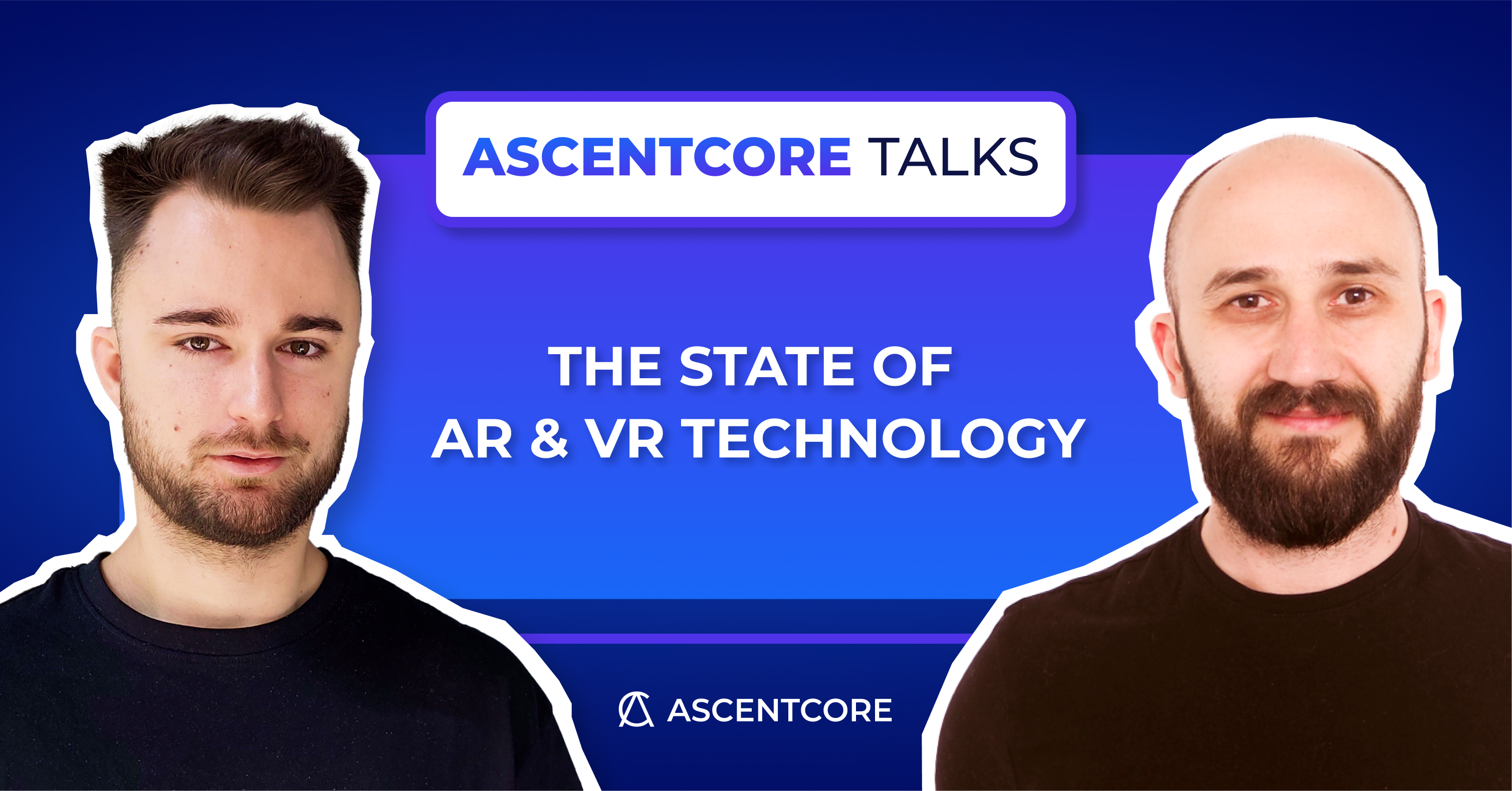At AscentCore, our clients are on the cutting edge of new technology, which means we are, too. Whilst we’re staying on top of what’s happening in tech while on the job, our team keeps innovating even off the clock, diving into new projects, and learning from each other.
Our CTO, Cornel Stefanache, recently sat down with AscentCore senior software engineer, Teodor Oanca, to see what he’s working on, how he got into working with AR and VR, and how they will shape the future – both in technology and our everyday life.
Cornel Stefanache: What about AR and VR interests you?
Teodor Oanca: My interest started during my first programming job in 2018, when I had the chance to use the first version of Microsoft’s reality smart glasses, HoloLens. The company was showing me all the different projects they were working on and I had a chance to test a few things out. Honestly, that first version wasn’t very good as far as the types of apps I could use. However, it was such an immersive experience that I was still impressed and realized this was the future. I think technology like this can change everything we do. We could get rid of our phones and do everything from a pair of glasses on our face.
Cornel Stefanache: So if you had to choose between AR and VR, which would you say is going to have the biggest impact in the near future?
Teodor Oanca: In different ways, I think they both will. With VR, we’ve seen this technology explode in popularity for gaming. But, it’s expensive to make things like VR glasses so companies will need to find that sweet spot of innovating new products while keeping the cost realistic for customers.
AR is also popular but will also require that balancing act of developing new products that aren’t too far out there that customers won’t buy them.
We’re seeing a resurgence of VR and AR products that have been around for a few years, like Google Glasses, now that technology has gotten better. It will be really interesting to see how a new prototype for these glasses goes over with the public. We may see more of this on the horizon if they do well.
Cornel Stefanache: I’ve been hearing about the development of apps that can be customized to a user to help solve challenges in unique ways, such as health care issues. How do you see AR/VR fitting into that?
Teodor Oanca: Since AI has evolved so much in the past few years, I think we’re going to see a lot more of these types of apps. They’ll be able to learn from a user and come up with treatments perfectly suited for them. For example, I was reading about the development of VR technology that can help patients manage their fear of needles when they’re in the doctor’s office. So they’ll have a pleasant immersive experience to help the visit be less stressful. Something like that might be fairly standard from patient to patient, but I think we’ll see tech like that get more customizable. There’s an opportunity for technology like VR to help control what someone sees and hears which can make for a better treatment experience for the patient and the doctor.
Cornel Stefanache: What AR projects are you working on that really excite you?
Teodor Oanca: At the moment I’m working on an AR app for restaurants that uses 3D images to display menu items on the table. I came up with the idea when I was traveling to countries where I didn’t know the language and had a hard time figuring out different dishes in restaurants. So essentially, this would allow a customer to “see” the menu item on their table so they understand what they’re ordering.
And I think this is a good time to develop something like this, especially for the restaurant industry, because they had to get really creative during the pandemic. Maybe before the pandemic a restaurant owner wasn’t concerned with QR codes or adding their menu to different delivery sites, but the pandemic forced them to adapt and change. And now, the stage is set to continue to innovate with technology to help the industry.
Cornel Stefanache: Obviously building apps like this is much more complex than more basic ones. What tools and platforms are you using to build AR/VR apps?
Teodor Oanca: Even though it’s usually used for games, I’ve been taking advantage of Unity for these types of apps. This allows me to make multi-platform apps in one fell swoop rather than developing two apps – one for Android and another one for iOS – and keeping two projects in sync. The downside is that I have to learn C#, which I’m not a big fan of. But, that’s part of learning new things! There’s also a really good package for AR called Vuforia that allows me to do things like object placement.
Cornel Stefanache: Given the complexity of AR and VR apps, and the tools needed to build them, what kinds of skills and experience does a developer need?
Teodor Oanca: You need to have proper programming experience as well as an understanding of computer graphics to understand how you position objects in the real world. For example, you need to be able to figure out how the camera moves, how shaders and lighting work together, and how objects collide.
And AR requires a more relative way of thinking. So you don’t place an object at 10 pixels, instead you place it 10 pixels away from an anchor that is a pole in real life.
Cornel Stefanache: We’ve talked about how we might benefit from AR and VR technology, so let’s talk a little bit about the downsides. For example, do you think institutions such as museums will lose out as VR and AR allow patrons to enjoy art from their couch?
Teodor Oanca: Museums could initially lose visitors but it can also provide them with the opportunity to adapt and innovate. So they can think about ways to attract more artists to their museum to attract more tourists. I see an opportunity for institutions to get more creative and for technology to augment our reality, not replace it. So yes, things will change for many industries and there may be an initial painful disruption, but ultimately, I think life as we know it will always find a way to adapt alongside our technology.
If your business is looking to adapt to the technologies of tomorrow, then partner with the OG of AI. Reach out to learn how we can leverage our AI/ML expertise to take your business to the next level.














